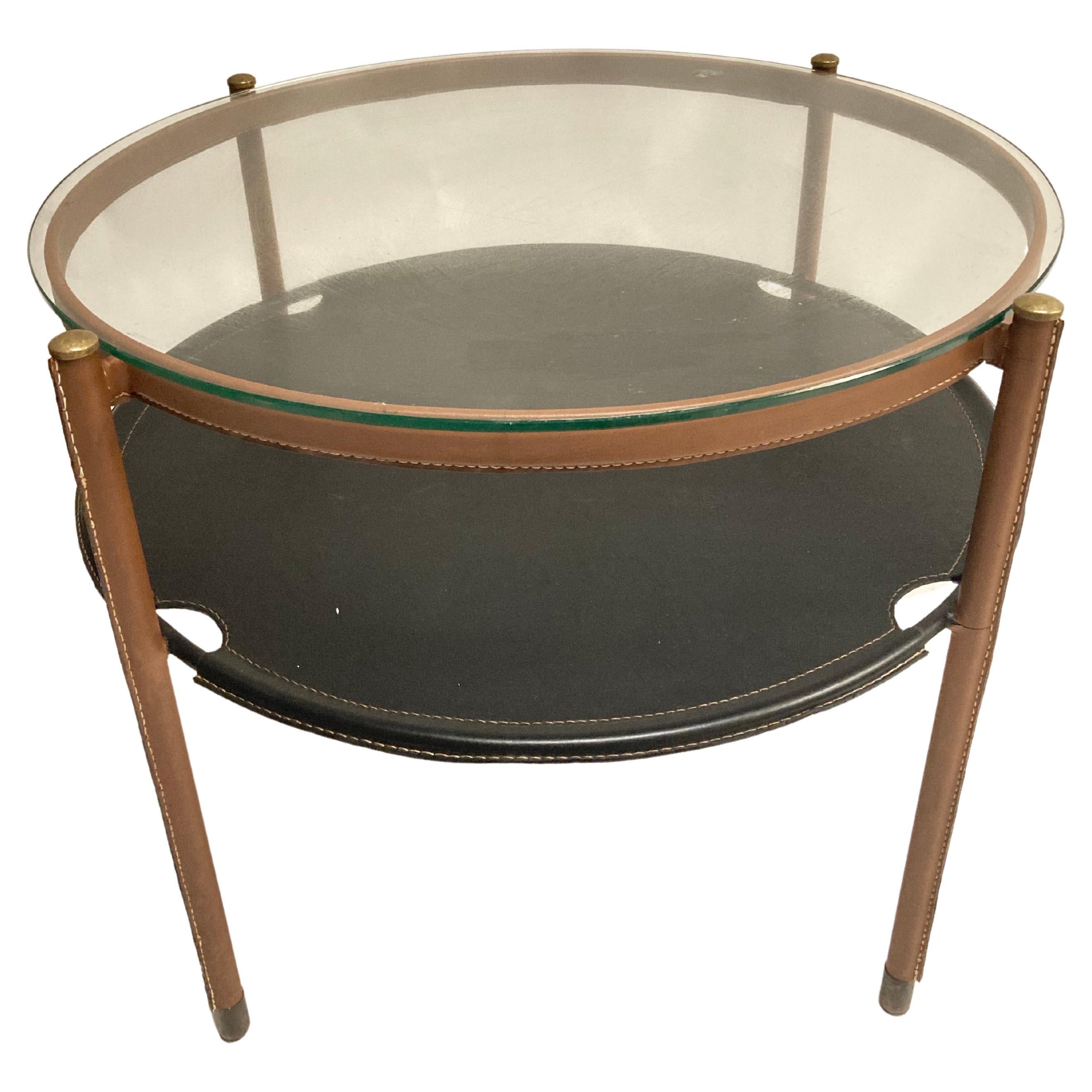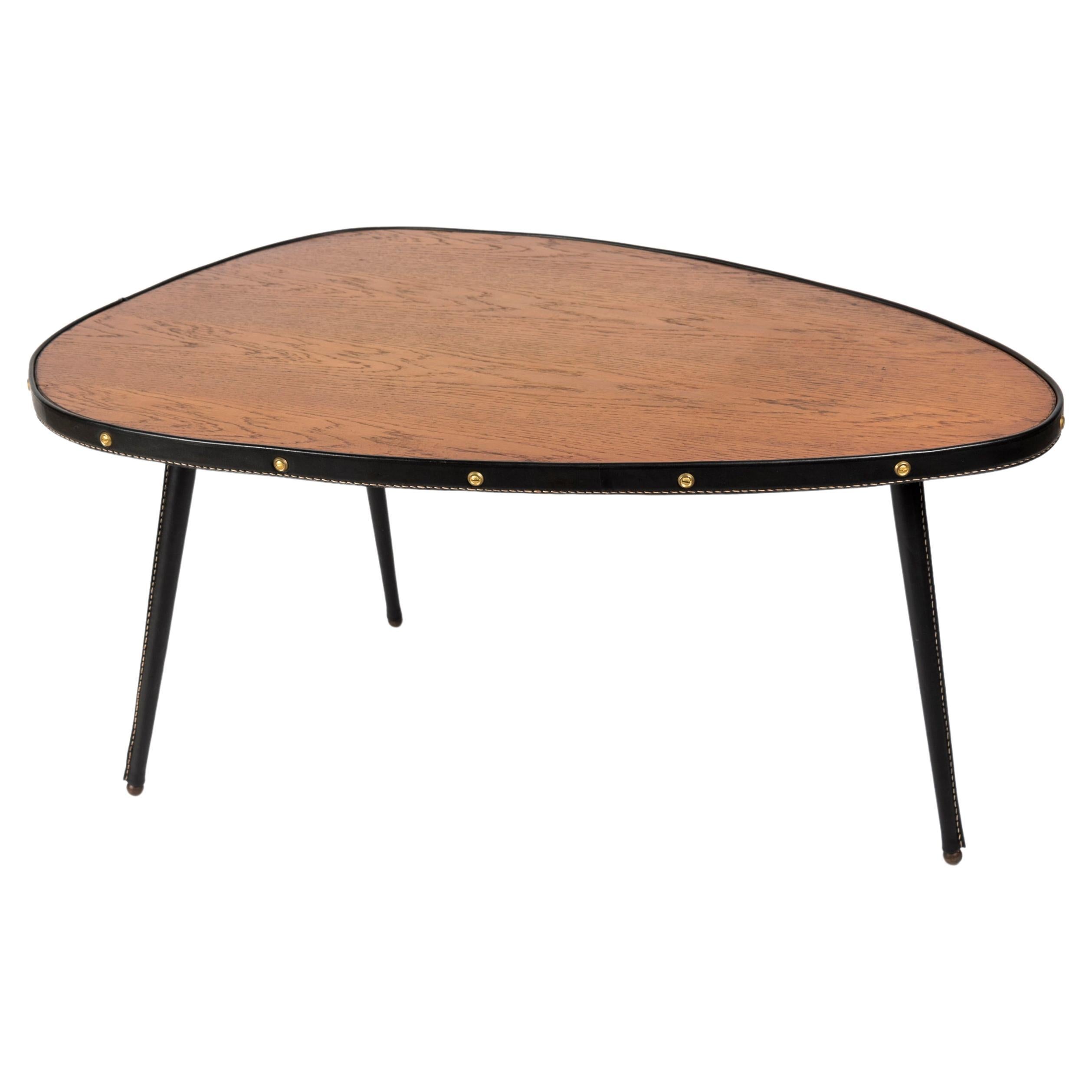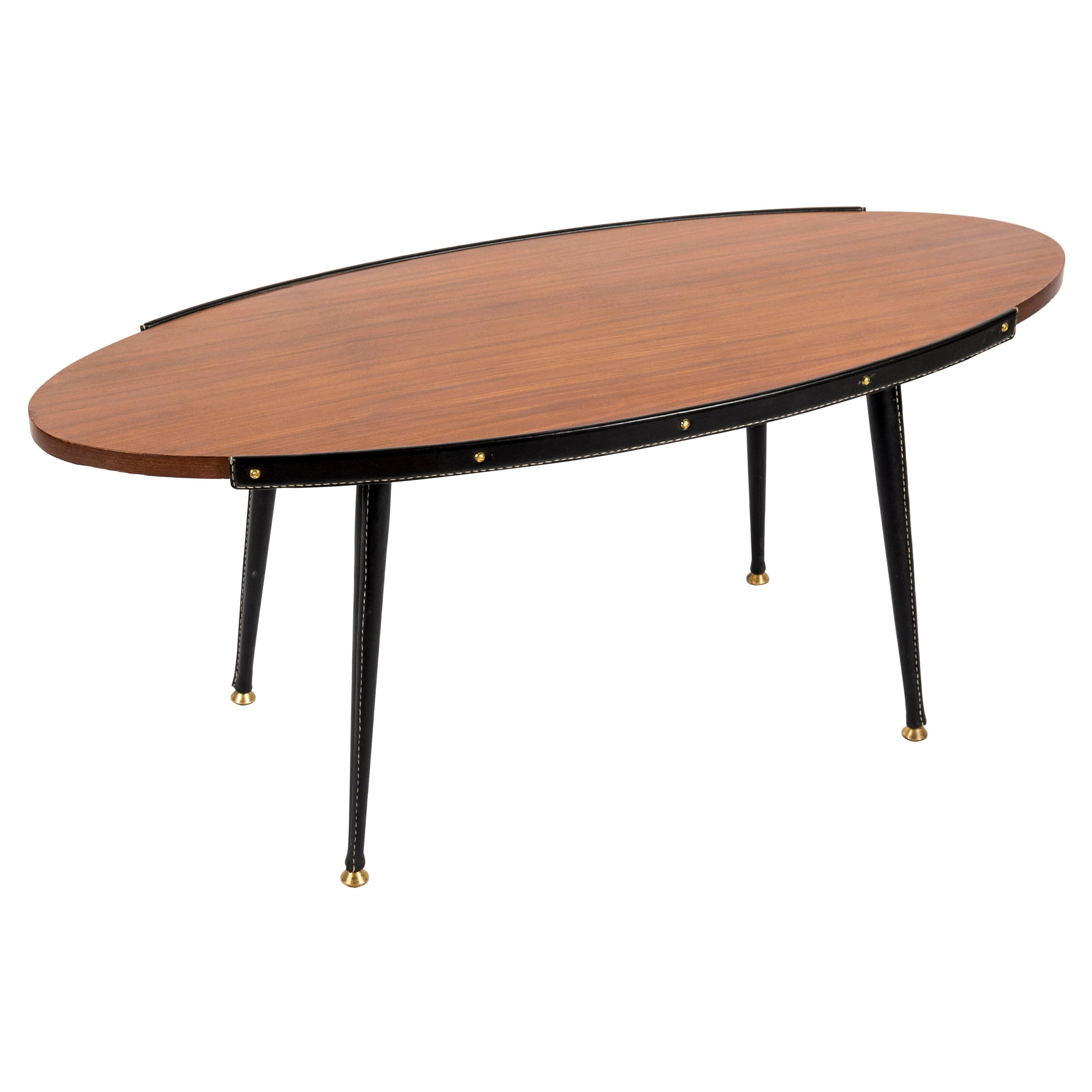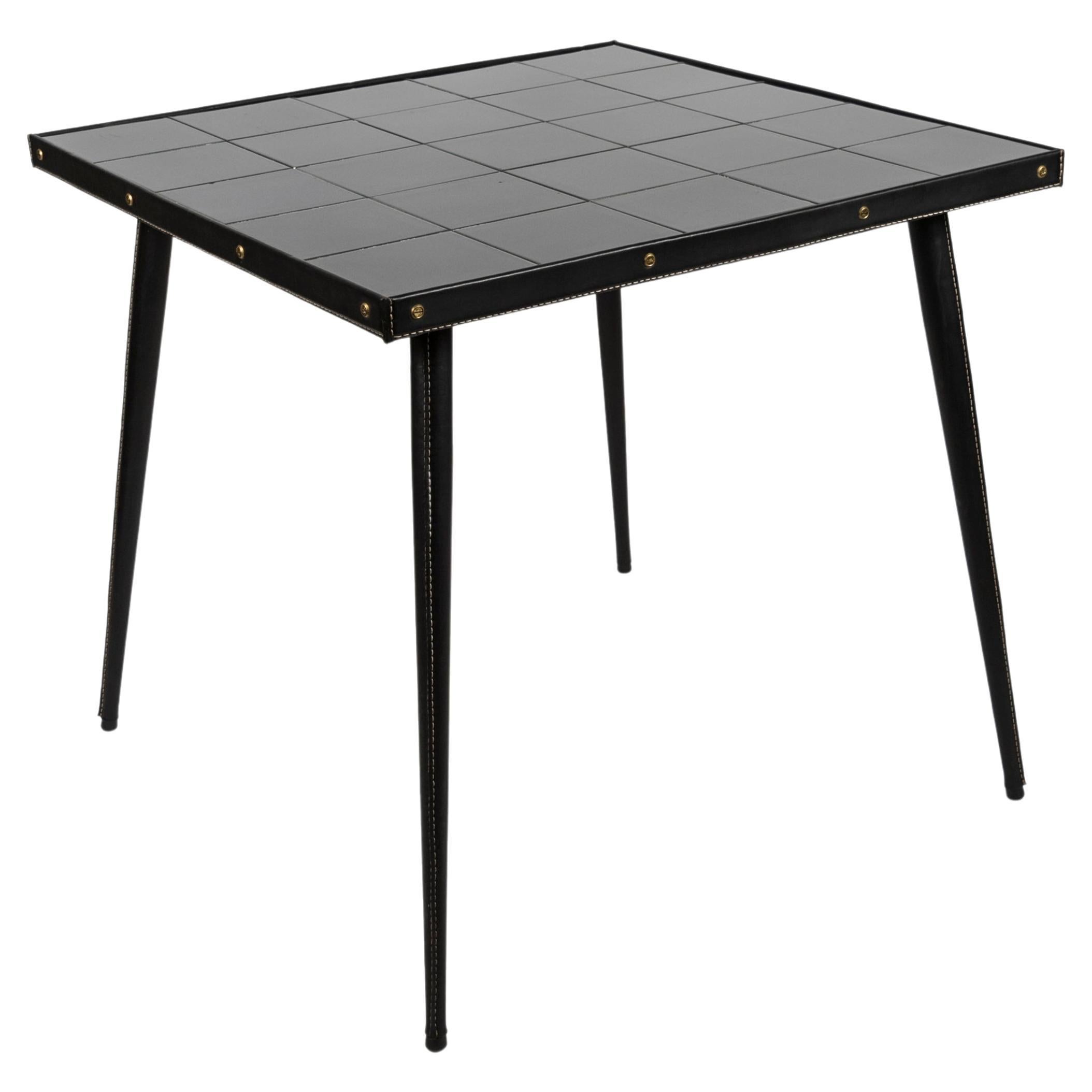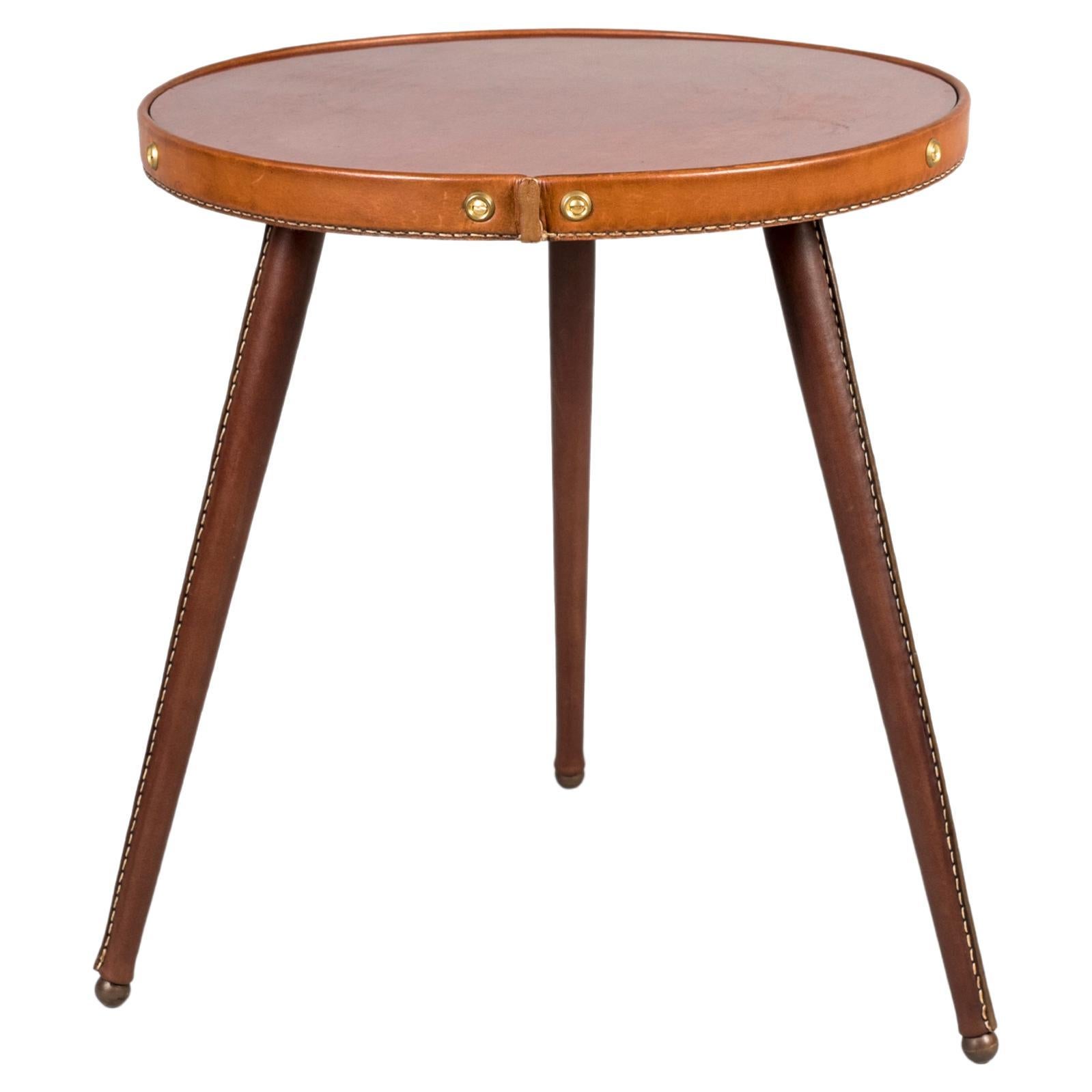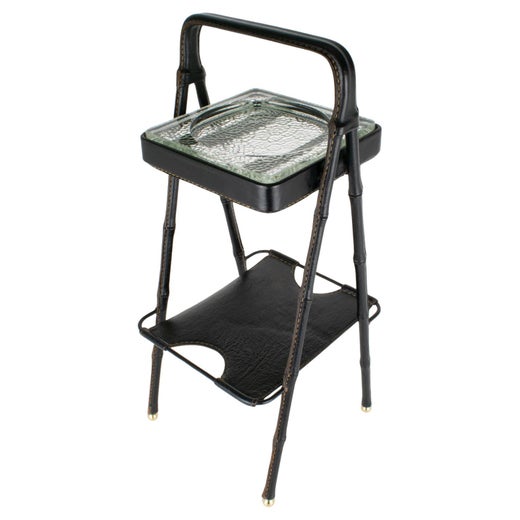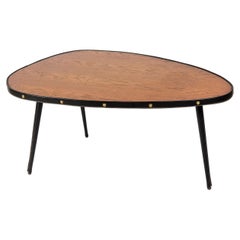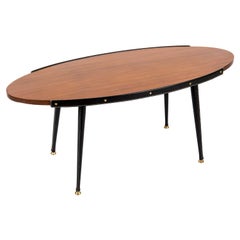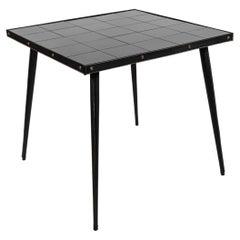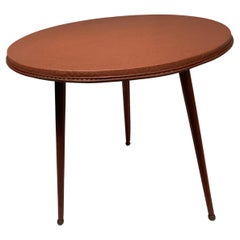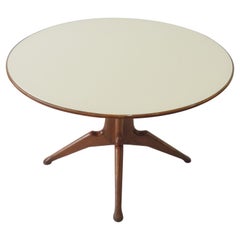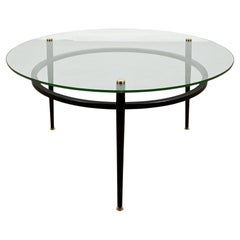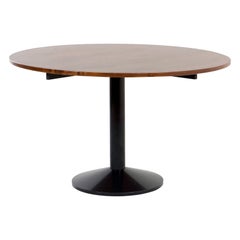1950's Stitched Leather and formica Circular table by Jacques Adnet
About the Item
- Creator:Jacques Adnet (Designer)
- Dimensions:Height: 29.93 in (76 cm)Diameter: 23.23 in (59 cm)
- Materials and Techniques:
- Place of Origin:
- Period:
- Date of Manufacture:1950's
- Condition:Wear consistent with age and use.
- Seller Location:Bois-Colombes, FR
- Reference Number:1stDibs: LU946035584142
Jacques Adnet
One of the most elegant and innovative 20th-century French furniture designers, Jacques Adnet created a simple, unadorned signature style that is both trim and vigorous. He began his career in the heyday of the Art Deco era, and in the 1950s, in association with Hermès, created chairs, lamps, desks and other pieces that employed slender metal frames clad in stitched saddle leather. With such furnishings, Adnet brought a fashion sensibility to design and decor that had not been seen since the 1920s prime of the great Paris couturier-decorator Paul Poiret.
Adnet was born in a provincial town in Burgundy, where he studied design before moving, along with his twin brother, Jean, to Paris to study at the École des Arts Décoratifs. After their graduation in the early 1920s, the brothers were hired to work in the decorative-arts atelier of the department store Galeries Lafayette, under the direction of Maurice Dufrêne, an Art Deco master who developed a singularly robust and opulent style. Both Adnets showed their work at the 1925 Paris Exposition Internationale des Arts Décoratifs et Industriels Modernes — the design fair from which the term Art Deco is derived.
In 1928, Jacques Adnet took charge of the struggling La Compagnie des Arts Français, a decorative-arts firm founded by Louis Süe and André Mare that created modern furnishings that bore traces of 18th-century styling. Adnet immediately took the company in a different direction. He developed a simple lithe and lean look that incorporated industrial materials such as metal and glass, along with exotic woods and finishes such as parchment and sharkskin.
Adnet’s furniture begs to be described in terms of personalities: charming faux-bamboo side tables, suave chrome lighting and urbane club chairs. His most noted pieces, which feature sleek metal frames wrapped in Hermès leather, have a character all their own — smooth, elegant and self-assured, they inhabit a room with the same wit and grace as Jean-Paul Belmondo and Catherine Deneuve.
Find vintage Jacques Adnet furniture for sale on 1stDibs.
- ShippingRetrieving quote...Shipping from: Saint-Ouen, France
- Return Policy
More From This Seller
View AllVintage 1950s French Center Tables
Leather, Glass
Vintage 1950s European Tables
Leather, Oak
Vintage 1950s European Coffee and Cocktail Tables
Leather, Mahogany
Vintage 1950s European Mid-Century Modern Center Tables
Metal
Vintage 1950s Italian Side Tables
Leather, Formica
Vintage 1950s French Side Tables
Brass
You May Also Like
Vintage 1950s French Side Tables
Leather
Vintage 1950s Italian Mid-Century Modern Tables
Glass, Wood
Vintage 1950s French Mid-Century Modern Coffee and Cocktail Tables
Brass, Steel
Vintage 1950s Italian Mid-Century Modern Tables
Metal
Vintage 1950s Italian Mid-Century Modern Dining Room Tables
Metal
Vintage 1940s French Art Deco Tables
Bronze

